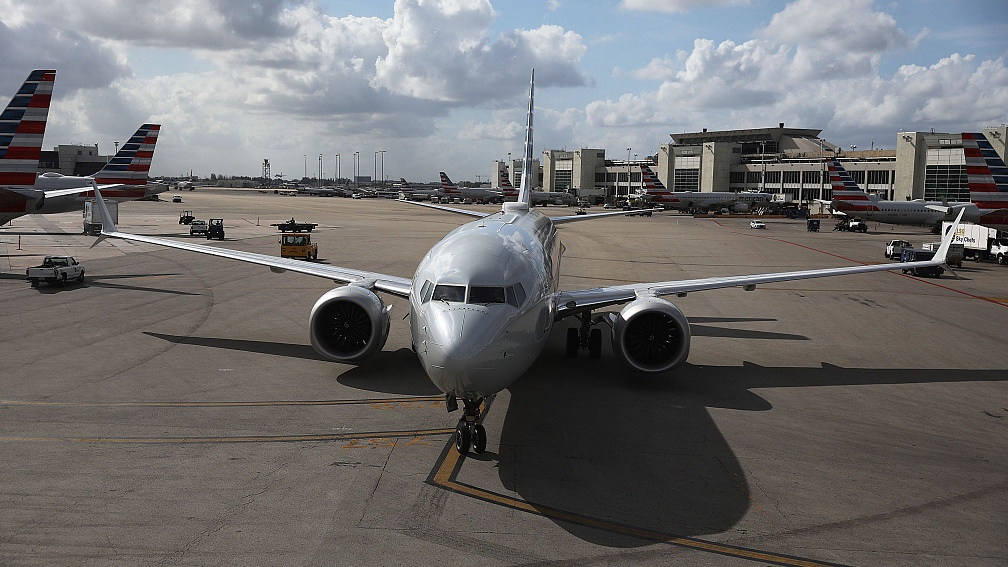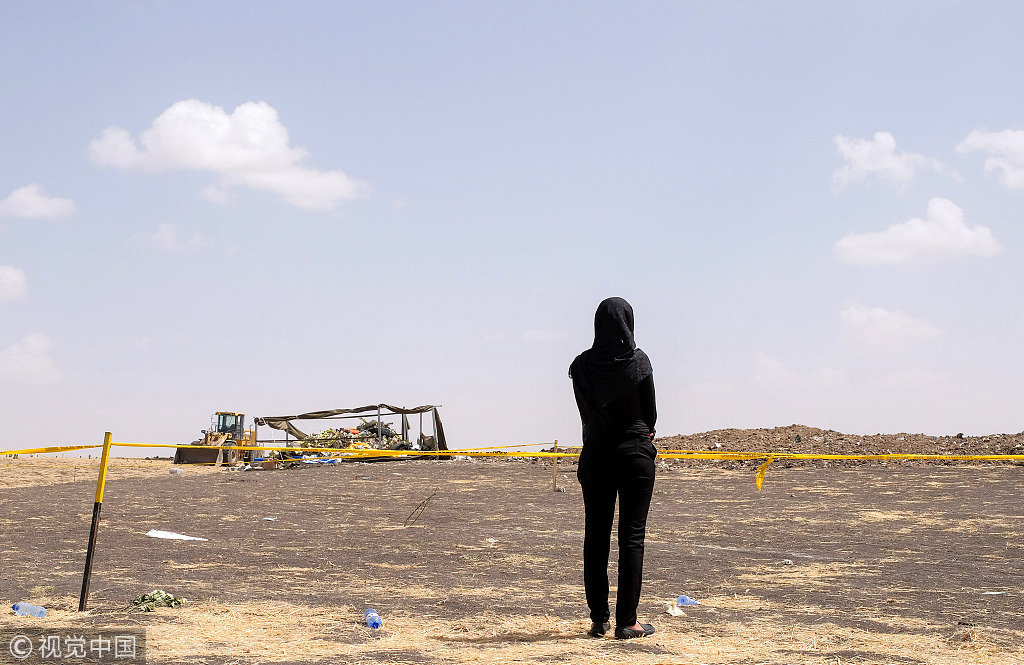
Opinion
16:36, 15-Mar-2019
The Boeing 737 MAX 8 isn't the only cause of the tragedy
Updated
22:41, 15-Mar-2019
Shen Zhourong

Editor's note: Shen Zhourong is a former Aeronautical Information Service Officer with Air Traffic Management Bureau of Civil Aviation Administration of China; he is now a lecturer at Beijing International Studies University. The article reflects the author's opinion, and not necessarily the views of CGTN.
When Ethiopian Airlines flight ET 302 crashed, it ended the lives of 149 passengers and 8 crew members, adding another shade of grey to the aviation industry after the still-fresh memory of the tragedy in Indonesia.
The aftermath of this event stoked the jittery nerves of all parties involved. The angry public is pointing their finger at the Boeing 737 MAX 8, which puts the world's oldest aircraft manufacturer in the hot seat, with no choice but to watch their stock plummet to a new low.

A mourner, believed to be an Ethiopian Airlines cabin crew member, arrives to pay her respects at the crash site of Ethiopian Airlines Flight ET302 on March 14, 2019 in Ejere, Ethiopia. /VCG Photo
A mourner, believed to be an Ethiopian Airlines cabin crew member, arrives to pay her respects at the crash site of Ethiopian Airlines Flight ET302 on March 14, 2019 in Ejere, Ethiopia. /VCG Photo
The real question is: Is the Boeing 737 MAX 8 really to be blamed for the crash?
The truth is that we may have yet to wait to find out the real cause. The prevailing argument is that the Autopilot software (A/P) got a faulty Angle of Attack (AOA) from the sensor, forcing the head of the plane to plunge in order to prevent a stall.
Stalling is a technical term in flight technology to describe the AOA exceeding the maximum value, leading to a situation where the lift force can no longer beat gravity. A typical way of saving the plane from such a situation would be to lower the tip.
It has been widely speculated that the culprit of these two crashes was this faulty software. And considering the number of flight bans this aircraft has worldwide, it looks like people are convinced the Boeing 737 MAX 8 is at fault.
While it is absolutely necessary to take precautionary measures, it is also important for the aviation industry to point out that the causes of air crashes are extremely complex. There is never one single reason to explain a tragedy.
Every aviation professional learns about Murphy's Law in their Human Factors in Air Incidents class, knowing that everything that can go wrong will go wrong. Air incidents are always caused by a chain of incidents, coincidences, and mistakes, which always happen at the worst possible time, worst possible place, and in the worst possible way.

A view shows the headquarters of France's BEA air accident investigation agency in Le Bourget, northern Paris, France, March 14, 2019. /VCG Photo
A view shows the headquarters of France's BEA air accident investigation agency in Le Bourget, northern Paris, France, March 14, 2019. /VCG Photo
The investigations into air crashes can take years to complete and involve meticulous analysis on the flight data, weather, ground personnel, maintenance, crew members, air traffic controllers, airline management and so on.
Apart from the much-discussed autopilot software, the First Officer had only 200 flight hours, a figure that would be outnumbered by a pilot student in most countries with a complete and round training scheme. The plane itself just completed a five-hour-flight from Johannesburg before it embarked for Nairobi; something could have also gone wrong there.
The Addis Ababa Bole international airport, though it is one of a kind in the African continent, still lags behind in terms of its infrastructure, ground maintenance and services, and air traffic management in communication, navigation, and aeronautical information services.
Ethiopia Airlines has a good track record in African aviation safety, so it is still too early to determine what are the real causes behind this heartbreaking crash, no matter how convincing the evidence looks like at present. To find out what really happened, we will have to sit this one out.
However, what we can know for sure is that air travel is still by far the safest way to travel. The number of road and rail deaths go far beyond that of air crashes recorded. Air crashes only appear to be a serious issue out of their sheer mortality rate per accident.
The most dangerous part of civil aviation is still traveling to and from the airport.
(If you want to contribute and have specific expertise, please contact us at opinions@cgtn.com.)

SITEMAP
Copyright © 2018 CGTN. Beijing ICP prepared NO.16065310-3
Copyright © 2018 CGTN. Beijing ICP prepared NO.16065310-3